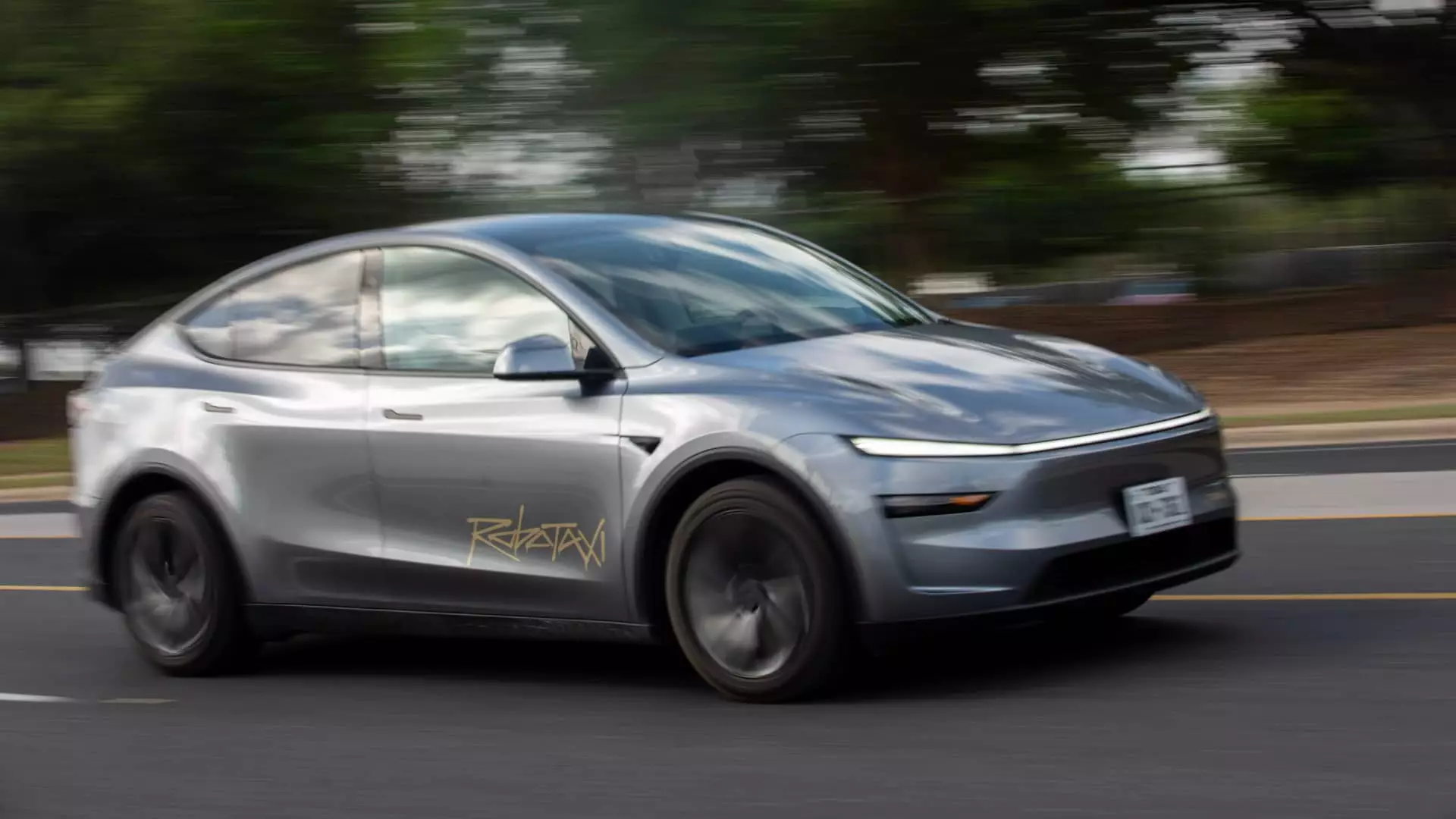Tesla’s recent announcements about expanding its robotaxi service stir enthusiasm and skepticism in equal measure. Elon Musk’s vision of a fleet of autonomous vehicles revolutionizing urban mobility captures imaginations, but the reality on the ground—especially in California—paints a more complicated picture. While the company’s ambitions seem rooted in technological innovation, regulatory hurdles and safety concerns cast long shadows over such progress. The hype surrounding Tesla’s future robotaxis risks overshadowing the urgent need for stringent oversight, transparency, and accountability.
Despite Musk’s claims about expanding the service to places like San Francisco, regulators have firmly shut down any notions that Tesla can operate fully autonomous taxis on California roads. The California Public Utilities Commission (CPUC) makes it clear: Tesla is not authorized to carry passengers in autonomous mode—period. Instead, the company’s proposed plans are limited to non-autonomous, human-driven car services, effectively reducing Tesla’s futuristic vision to a traditional taxi. This discrepancy between Musk’s technological promises and regulatory realities underscores a broader issue: the tension between innovation and safety, and how public policy struggles to keep pace with rapid technological advancements.
What Tesla seems to neglect—or perhaps deliberately downplays—is the importance of compliance and public trust. They boast of technological strides, but in California, they remain constrained by existing permits that restrict them to human-driven services. The company’s plans to extend service to employees’ friends and the public highlight strategic aspirations, but these are still operating within a framework that demands a human in the vehicle at all times. This legal limitation puts the brakes on Musk’s vision of truly autonomous robotaxis charging fares without driver oversight, at least for now.
A critical point often overlooked is the gap between Tesla’s marketing narratives and the actual regulatory landscape. The company’s use of language like “full self-driving” and presentations of hands-free operations blur the line between what’s technically feasible and what’s legally permissible. Videos circulating online showing users engaging in other tasks while FSD is active violate California regulations and exacerbate public misunderstanding about how autonomous systems are meant to work. If Tesla continues to portray their driver-assistance features as more capable than they truly are, the risk of accidents, lawsuits, and regulatory crackdowns increases exponentially.
Tesla’s regulatory struggles aren’t limited to California. In Austin, Texas, the company is testing its robotaxi-like service, but even there visibility is limited; the services operate primarily during daylight hours, with human safety supervisors present. The company markets these pilot programs as “early access,” subtly hinting that widespread deployment is still on the horizon. Such restraint may be wise, as it reveals a tension within Tesla’s broader strategy—pursuing technological breakthroughs while managing the risks of premature deployment.
Yet, the most glaring issue remains: the lack of transparent communication with local communities and regulators. County officials in Marin and elsewhere express disappointment over Tesla’s opaque approach—little formal outreach or consultation about these initiatives. This disconnect between Tesla’s ambitions and community expectations hampers public acceptance and could fuel opposition. Companies pioneering disruptive technology must recognize that societal trust is as vital as technological capability, and transparency is foundational to building that trust.
Moreover, Tesla’s ambitious plans come amidst ongoing regulatory scrutiny, including investigations into whether the company has misled consumers about the capabilities of its driver-assist systems. While Tesla insists that features like Autopilot and FSD require drivers to remain actively engaged, demonstrative videos and user reports challenge that narrative. The California Department of Motor Vehicles’ attempts to suspend Tesla’s license reflect deep concerns about consumer safety and truthful marketing practices. If regulatory agencies and lawmakers feel misled, the partnership necessary for deploying autonomous taxis at scale becomes significantly harder to forge.
Tesla’s rivalry with companies like Waymo highlights another key point: regulatory preparedness. Waymo obtained full driverless deployment permits before launching its service in California, setting a clear example of disciplined compliance. Tesla, on the other hand, seems to approach regulation as an obstacle rather than a partner, risking backlashes that could set back the entire autonomous vehicle movement. Pushing forward without adequate regulatory alignment could lead to accidents, legal liabilities, and a loss of public confidence—potentially derailing the very breakthroughs Tesla seeks to achieve.
As Tesla pushes boundaries, it must confront an essential truth: autonomous vehicle technology is profoundly complex, and rushing to market without addressing safety, transparency, and regulation could prove catastrophic. Instead of viewing regulators as adversaries, the company would benefit from embracing collaboration—engaging openly with communities, regulators, and safety advocates. Innovation should never compromise safety or erode public trust; the road to truly autonomous mobility requires patience, humility, and a commitment to responsible deployment.
Tesla’s robotaxi journey is emblematic of a broader narrative about technological entrepreneurship and societal readiness. While the company’s pioneering spirit should be celebrated, it must also be tempered with responsible behavior, transparent communication, and respect for existing laws. Only then can the promise of autonomous mobility transform from a tantalizing vision into a safe, reliable reality accessible to all.

